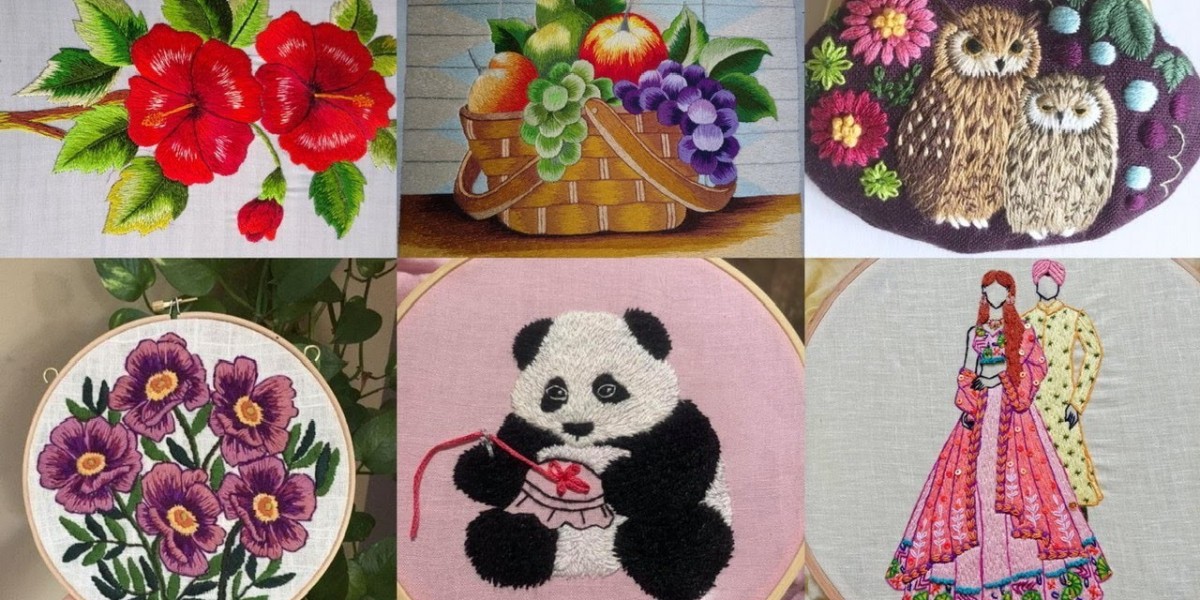Digitizer for Embroidery: Transforming Designs into Stunning Stitch Work
Embroidery has evolved from a traditional craft to a technologically advanced process, thanks to embroidery digitizing. A digitizer for embroidery is an essential tool for converting artwork into precise stitch patterns that embroidery machines can read and replicate with perfection. Whether you're a hobbyist or a professional, understanding the role of embroidery digitizing can elevate your designs and improve embroidery quality.
What Is a Digitizer for Embroidery?
A digitizer for embroidery is specialized software or a skilled professional responsible for converting images into embroidery machine-compatible files. Unlike simple image conversion, embroidery digitizing requires careful planning of stitch types, sequencing, and density to ensure the final output is flawless. Proper digitizing prevents design distortions, thread breakage, and inefficient stitching paths, making the embroidery process smoother and more efficient.
How Does Embroidery Digitizing Work?
The digitizing process involves several key steps:
Design Preparation – The artwork is refined and imported into digitizing software, ensuring it's suitable for embroidery.
Stitch Mapping – The digitizer assigns stitch types, directions, and density settings, taking into account fabric type and embroidery complexity.
Path Optimization – To prevent unnecessary thread jumps and minimize breaks, a structured stitch sequence is created.
File Conversion – The design is saved in a format compatible with the intended embroidery machine.
Test Stitching – A sample is embroidered to ensure accuracy, allowing for any necessary adjustments before final production.
Best Embroidery Digitizing Software
The quality of embroidery digitizing largely depends on the software used. Some of the best digitizer for embroidery software options include:
Wilcom Embroidery Studio – Industry-leading software used by professionals worldwide.
Hatch Embroidery – A user-friendly program suitable for both beginners and experts.
Brother PE-Design – Ideal for Brother embroidery machines, offering seamless integration.
Embird – A modular software solution providing flexibility and customization.
Ink/Stitch – A free, open-source alternative for embroidery digitizing enthusiasts.
Advantages of Using a Digitizer for Embroidery
A well-digitized design ensures:
High Precision – Crisp, clear stitches that enhance the overall appearance of the design.
Fabric Adaptability – Properly adjusted stitch density prevents fabric puckering or stretching.
Efficiency in Production – Optimized stitch paths reduce thread trims and speed up embroidery time.
Machine Compatibility – Various file formats ensure seamless operation across different embroidery machines.
Manual vs. Auto Digitizing: Which One Is Better?
Digitizing can be done manually or automatically, each with its pros and cons.
Manual Digitizing – This process involves carefully placing every stitch, ensuring top-notch quality and precision. However, it requires experience and takes more time.
Automatic Digitizing – Many embroidery software programs offer an auto-digitizing feature that converts images into stitch patterns instantly. While this is faster, it often lacks the precision and refinement that manual digitizing provides.
Hiring a Professional Digitizer for Embroidery
If you don’t have the time or expertise to digitize designs yourself, outsourcing to a professional digitizer for embroidery can be a game-changer. When selecting a professional, consider:
Experience and Portfolio – Reviewing previous work helps assess their skill level.
Customer Reviews – Positive feedback from other clients ensures reliability.
Turnaround Time – A professional digitizer should deliver quality work within a reasonable timeframe.
Machine Compatibility – Ensure they can provide the correct file format for your embroidery machine.
Common Digitizing Challenges and Solutions
Embroidery digitizing isn’t without its difficulties. Some common challenges include:
Excessive Stitch Density – Too many stitches in one area can cause fabric distortion. Solution: Adjust stitch spacing and use appropriate underlay stitches.
Thread Breakage – Poor stitch sequencing can lead to frequent thread breaks. Solution: Optimize the stitch order and tension settings.
Design Misalignment – Shifting stitches can distort the final design. Solution: Use proper stabilizers and adjust hooping techniques.
Conclusion
A digitizer for embroidery is a vital component of modern embroidery, bridging the gap between digital designs and stitched masterpieces. Whether you're using software or hiring a professional, understanding the digitizing process ensures precision, efficiency, and high-quality embroidery results. By mastering embroidery digitizing, you can take your embroidery projects to the next level, producing stunning and professional-grade designs with ease.







